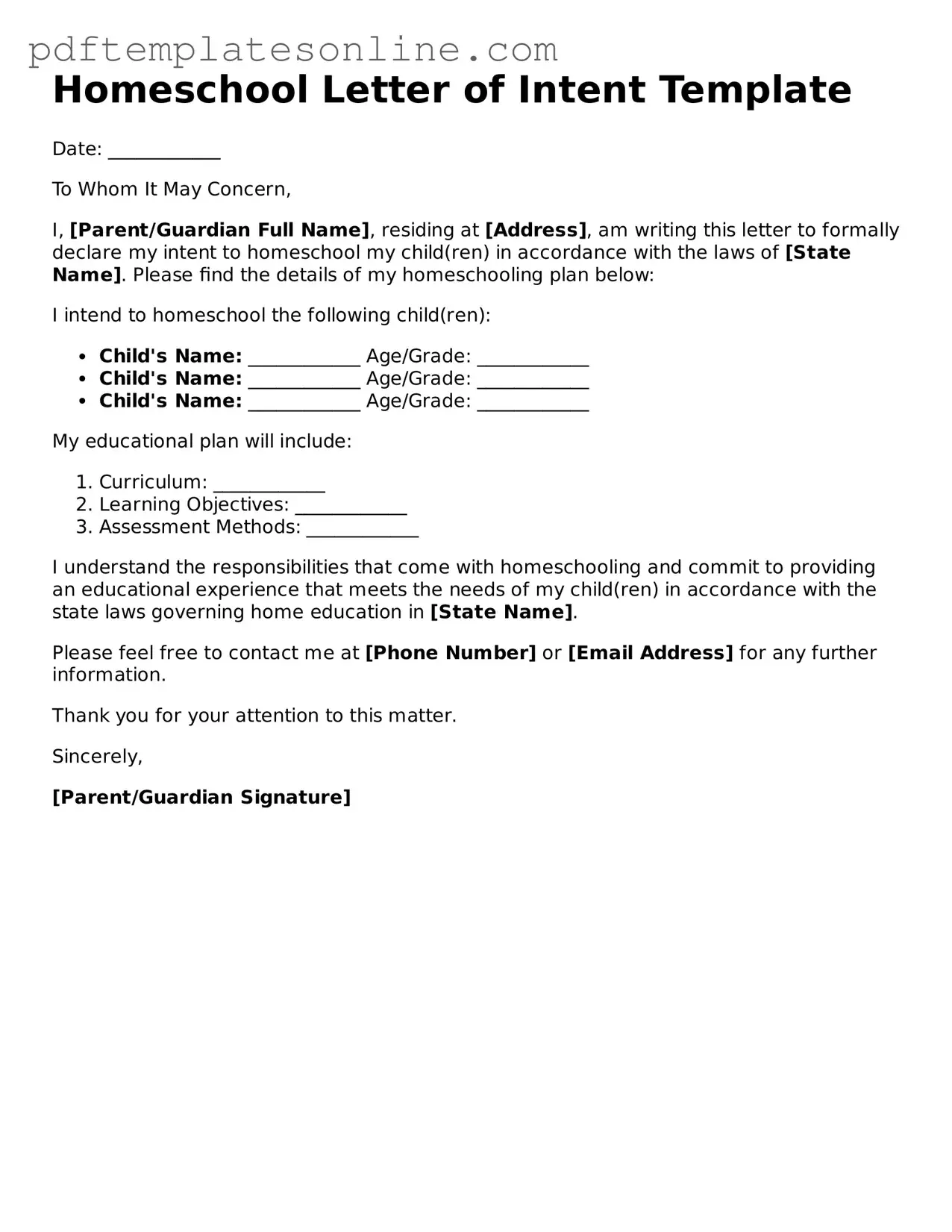Fillable Homeschool Letter of Intent Document
The Homeschool Letter of Intent form is a crucial document that parents submit to officially declare their intention to homeschool their children. This form serves as a formal notification to local education authorities, ensuring that families comply with state regulations. Understanding its significance can help parents navigate the homeschooling process more effectively.
Access Homeschool Letter of Intent Editor Now
